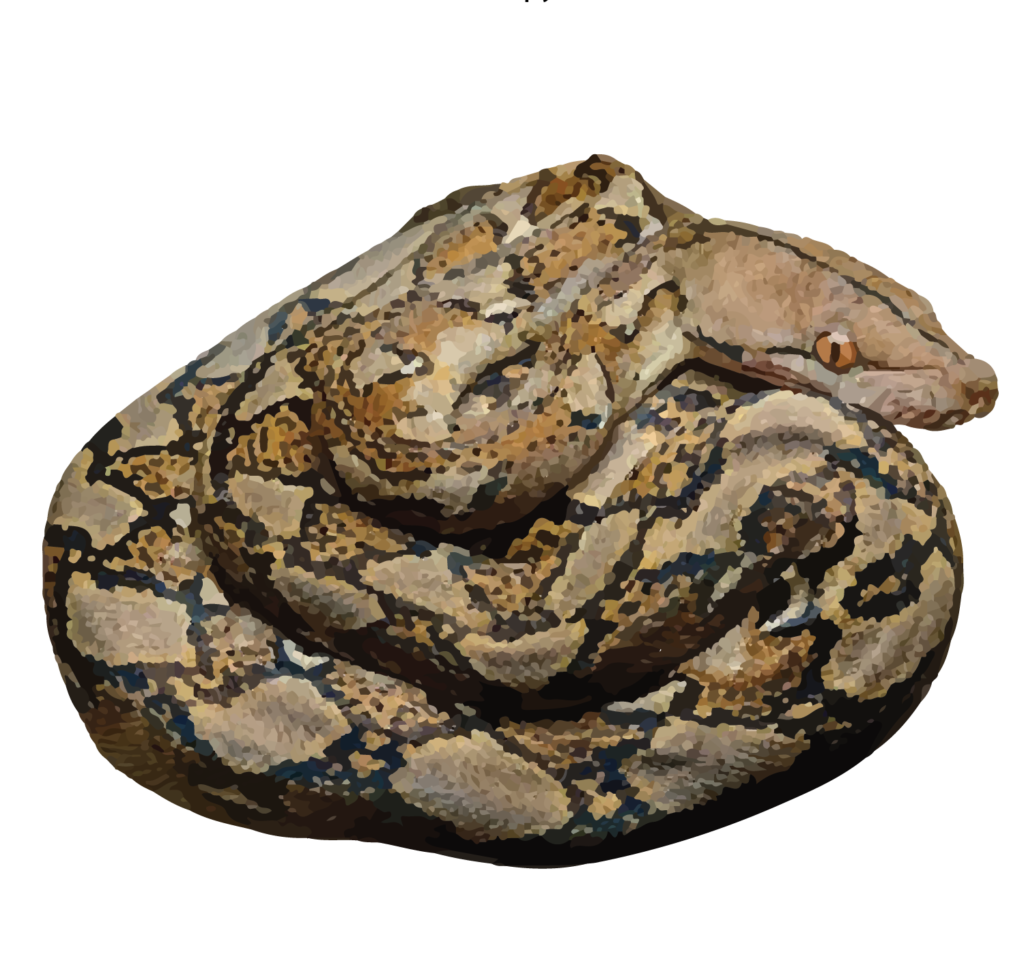Reticulated Python (Malayopython reticulatus)

- Habitat: Rainforests, woodlands, grasslands, swamps, and marshes.
- Distribution: Nicobar Islands.
- Diet: Rats, rodents, mouse eared bats and treeshrews.
- Size:3 to 6 metres
The Reticulated Python (Malayopython reticulatus) is one of the largest and longest snake species in the world, belonging to the Pythonidae family. Known for its striking pattern and impressive size, it is native to Southeast Asia. Here are some key details about this species:
Physical Description:
- Appearance:The Reticulated Python has a distinctive and intricate pattern on its scales, with a net-like (reticulated) design of yellow, black, brown, and white markings. This pattern provides excellent camouflage in its natural habitat.
- Size:This species is one of the longest snakes in the world, with adults commonly reaching lengths of 3 to 6 meters (10 to 20 feet). Some individuals can grow even longer, with the largest recorded specimens exceeding 7 meters (23 feet) in length.
- Head:The head is elongated and distinct from the neck, with large eyes and vertical slit pupils. The scales on the head are smooth.
Habitat:
- Geographical Range:The Reticulated Python is found throughout Southeast Asia, including countries such as Indonesia, Malaysia, Thailand, the Philippines, Vietnam, Cambodia, and Myanmar.
- Preferred Habitat:This species inhabits a variety of environments, including rainforests, woodlands, grasslands, swamps, and marshes. It is often found near water bodies like rivers, streams, and lakes.
Conservation:
- Status:The Reticulated Python is listed as Least Concern on the IUCN Red List, but it faces threats from habitat destruction, hunting for skin and meat, and the illegal pet trade.
- Protection:Efforts are being made to protect this species through habitat conservation, legal protection, and raising awareness about its ecological importance.
Importance:
- Ecological Role:The Reticulated Python plays a crucial role in controlling populations of various animals, helping to maintain ecological balance. As a top predator, it influences the structure of its ecosystem.
- Human Interaction:Although capable of attacking large animals, incidents involving humans are rare. The Reticulated Python’s presence in populated areas can lead to fear and conflict, but education and awareness can help mitigate these issues.
